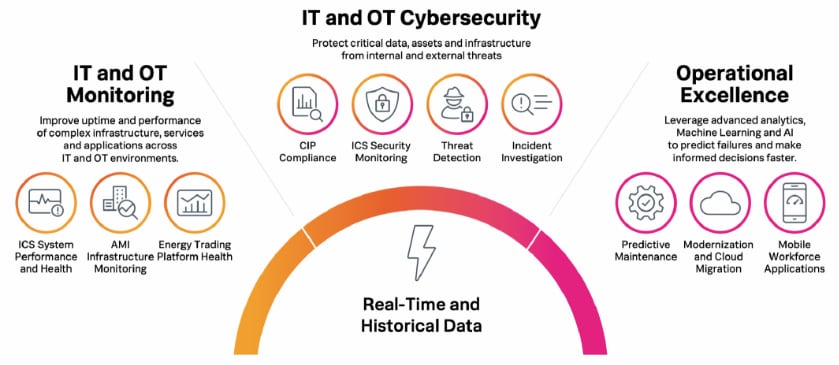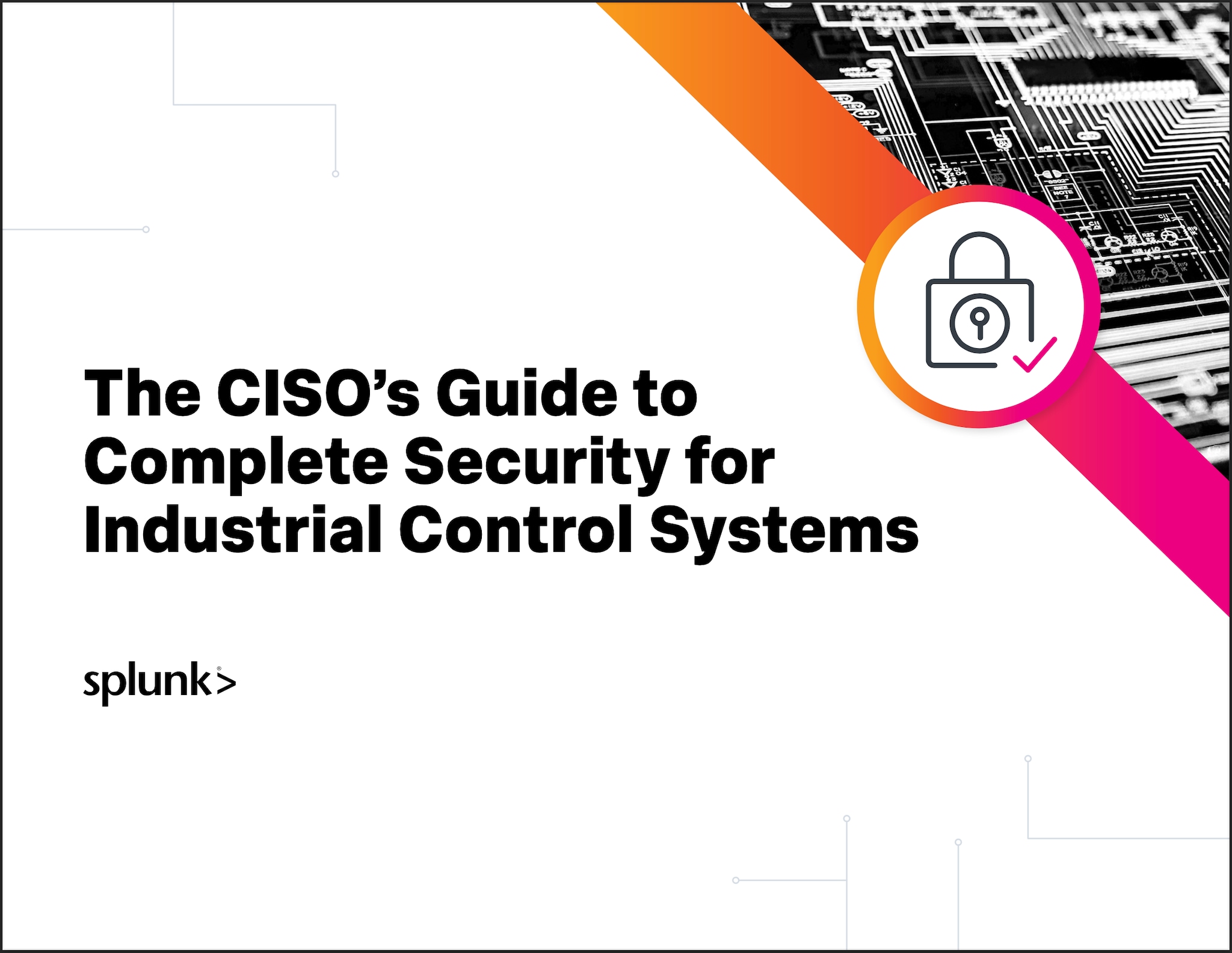SCADA Systems: What They Are & How They Work

Industrial control systems are complicated.
Imagine any industrial process: running electric grids, keeping wastewater facilities safely running, ensuring trains leave and arrive on time. Now, imagine what it takes to power these processes. These are industrial control systems (ICS) and they are responsible for making sure all the systems do what they’re meant to be doing.
One type of industrial control system is the SCADA system. (Sometimes, the terms ICS and SCADA are used interchangeably, though technically that’s incorrect.) SCADA systems help organizations to better control, monitor, and analyze their industrial devices and industrial processes.
Let’s take a look at how SCADA systems work.
What is SCADA: Supervisory Control & Data Acquisition?
Supervisory Control and Data Acquisition (SCADA) is one type of industrial control system. It is considered a “supervisory-level” control system because it refers to a high-level layer of control and management process commonly used in industrial process applications, especially those that power critical infrastructure for countries around the world.
Basically, you can use SCADA to help with a variety of activities necessary in end-to-end industrial processes:
- Data collection
- Monitoring
- Control
- Decision support
The goal of SCADA systems is to simplify the control and automation of large-scale and complex industrial processes.
(Related reading: security for industrial control systems.)
Fundamentals of SCADA
SCADA systems have evolved over time, through four generations:
- Monolithic: Standalone systems without networking.
- Distributed: Basic networked systems with limited communication.
- Networked: Full integration of local and wide-area networking.
- IoT-based: Edge computing and cloud integration, enabling advanced analytics and remote access.
Early versions monitored and automated monolithic systems, then eventually moved to more complex distributed network systems. Overtime, SCADA systems were incorporated in both local- and wide-area networking (LAN and WAN). The current generation of most industrial processes rely on IoT connected edge-computing systems.
Though the models have changed, the basic principles and functionality of the SCADA operating networks remain largely the same. SCADA works as a standardized mechanism to control industrial processes, particularly in industries such as:
- Manufacturing
- Transportation
- Energy and utility industries
- Oil and gas companies
- Other critical infrastructure support
How SCADA systems work
In a SCADA system, individual control modules communicate with each other and the backend control systems over a distributed network environment. At the highest level, there are two primary functions:
- The control actions are automated and programmable. (These are responsible for all the varied tasks.)
- A supervisory role is established to allow for human intervention.
This is different from a real-time direct control system that may operate autonomously.
Who invented SCADA systems?
SCADA systems — the one’s we’re discussing here in this article — have evolved over time. As the wise Wikipedia community describes:
The SCADA concept was developed to be a universal means of remote-access to a variety of local control modules, which could be from different manufacturers and allow access through standard automation protocols. In practice, large SCADA systems have grown to become similar to distributed control systems in function, while using multiple means of interfacing with the plant. They can control large-scale processes that can span multiple sites, and work over large distances.
Despite its name, SCADA International did not invent SCADA systems. Based in Denmark, SCADA International is an industrial software and hardware provider.

Use cases for SCADA systems
As you may imagine, SCADA systems are critical in many areas and industries.
Water and wastewater management
We would be nowhere without water. And, arguably, we would be in a much worse state without SCADA systems to:
- Monitor critical activities and ensure proper pH levels, chemical dosages, and equipment performance.
- Maintain water quality and energy consumption.
Power generation, transmission, and renewable energy
SCADA systems monitor power plants, substations and the transmission lines that move energy and power, collecting data and automating controls to prevent blackouts and overloads. As smart grids become more common, SCADA integrates with IoT sensors for real-time power distribution and load balancing optimization.
As more renewable energy sources are developed, SCADA can support solar farms, wind turbines, and hydroelectric plants to maximize uptime and efficiency.
(Related reading: IoT monitoring and sustainable technology.)
Additional use cases
Of course, our lives rely on a variety of services in the physical world. Here’s a few more places where SCADA systems play a quiet but critical role:
- Transportation. SCADA systems are used in trains and railway systems, airports, and public transportation to monitor signaling systems and runway lighting, track indoor and outdoor conditions, ensure safe and efficiency power supply, and, yes, even ensure our bags get delivered to us.
- Oil and gas. SCADA systems detect leaks and automate emergency shutdowns in oil and gas pipelines and also monitor and optimize refiner and production processes.
- Buildings. Do you work or live in a building with others? Good chance SCADA systems are used to manage temperature, lighting, and energy consumption — especially in smart buildings.
- Manufacturing. Surely, you’ve bought items made in factories. SCADA systems are there, too, monitoring machinery, assembly lines, and robots. They’re also analyzing data in real-time to maintain quality standards.

So, how do SCADA systems do it?
Components in SCADA systems
Though SCADA systems are complex, we can break down the common components of a SCADA system:
Human machine interface (HMI) & the supervisory system
The Human machine interface (HMI) and the supervisory system together make up the client end of the SCADA system.
This client end compiles and presents monitoring and control information to a human supervisor. With this information, the supervisor can:
- Respond to alerts.
- Override automated controls.
- Audit the end-to-end process.
The HMI software may operate on local on-site servers or private cloud environments that also host large databases collecting and storing alert information in real-time. The supervisory functionality is integrated with the HMI.
Once the data is collected from field devices, the logs are processed and stored in the storage database. Then, it’s the supervisory (human) level that executes and automated control policies and rules. Like any interface, the HMI displays the real-time monitoring information and high-level control commands sent to the controllers and actuators in the network.
Remote terminal units (RTUs)
Think of Remote Terminal Units, RTUs, as intermediaries. RTUs are the control systems that interface the distributed sensors in the field to a backend SCADA monitoring and supervisory system. RTUs serve as intermediaries between field sensors/actuators and the central SCADA system.
The general purpose of the RTU is to acquire and communicate data remotely over various networks. It works by:
- Collecting the data stream or logs from sensors.
- Filtering and preprocessing the raw data.
- Transmitting this information to the SCADA systems through a LAN/WAN.
Limited preprocessing and control logic may include:
- Converting analog sensor data to digital signals.
- Filtering signals based on frequency bands.
- Providing some redundancy and edge computing capabilities to execute SCADA control commands to the actuators.
Programmable logic controllers (PLCs)
Programmable logic controllers are among the most essential components of the SCADA systems. That’s because the PLCs execute the logic controls and automation tasks.
PLCs include dedicated low-powered computing systems and communication modules for data transmission. Though the computational capacity is limited, PLCs are optimized to efficiently execute pre-defined control algorithms — that’s their main purpose: to establish local process control with advanced logic programming.
PLCs also processes and transmits monitoring information to the HMI.
Sensors and actuators
The devices that act upon the control logic and generate information are called sensors and actuators. These actions these devices take may include:
- Mechanical switching
- Measuring a parameter such as electric current and temperature
Sensors measure the physical phenomena — what’s happening — and transmit data about that. Actuators perform control actions.
Sensors and actuators typically include a transducer — this converts measurements into an analog signal by detecting the physical phenomenon. An analog measurement may also be converted into discrete digital logs. The signal may be conditioned, filtered, and preprocessed before transmitting it via RTU.
When executing a control action, sensors and actuators interact with PLCs, converting the electrical signal into mechanical actions (such as switching).
Communication network
The primary role of the network in a SCADA system is threefold:
- To acquire, collect, and communicate sensor and control data.
- To distribute commands.
- To monitor system performance.
This is achieved in three layers of communication networks.
The Field Layer handles data communications between sensors, actuators, PLCs and RTUs. The network may be wired or wireless, using common protocols such as Modbus and Profibus.
At the Supervisory Layer, the control network connects the RTUs and PLCs with the backend control systems using terminals such as PROFINET or Ethernet/IP. Fast and secure connectivity is typically achieved using fiber optic cables.
Long distance communication takes place over the Wide Area Network (WAN) using cellular (4G/5G) and satellite communication networks. This is typically used for external enterprise applications using TCP/IP protocols.
Challenges with SCADA
SCADA projects are typically high CapEx investments that tend to suffer from vertical scalability challenges such as:
- Improving and innovating functionality.
- Enhancing computing power.
For example, the programmability of PLCs is limited in flexibility — that’s because of the prevalent use of proprietary languages based on Ladder Logic or Functional Block Diagrams.
However, considering the standardization and maturity of SCADA technologies, scaling these systems horizontally — such as increasing the number of sensor endpoints — is limited only by cost.
SCADA systems security
Of course, another challenge has to do with outsiders: cyberattacks on these systems that can cause real, serious harm: both to the immediate physical environment and to the many people who rely on these systems for services.
SCADA systems are increasingly targeted by cyber threats due to their critical role in infrastructure. Tools like Splunk help mitigate these risks.
Splunk secures industrial control systems
As the world grows increasingly aware of what digital attacks can do, we can’t forget that digital events can have serious consequences in the real world.
Monitoring must be built-in to these industrial systems to ensure their success and reliability. Splunk provides the engine that helps in monitoring, searching, analyzing, and visualizing large amounts of energy and utility data at scale. Learn more about Operational Technology (OT) Security Add-on for Splunk.
See an error or have a suggestion? Please let us know by emailing splunkblogs@cisco.com.
This posting does not necessarily represent Splunk's position, strategies or opinion.
Related Articles
About Splunk
The world’s leading organizations rely on Splunk, a Cisco company, to continuously strengthen digital resilience with our unified security and observability platform, powered by industry-leading AI.
Our customers trust Splunk’s award-winning security and observability solutions to secure and improve the reliability of their complex digital environments, at any scale.





